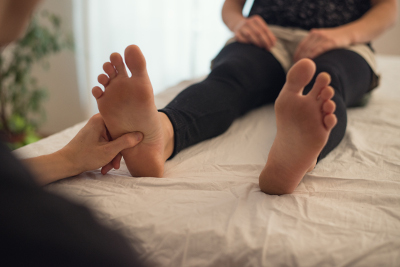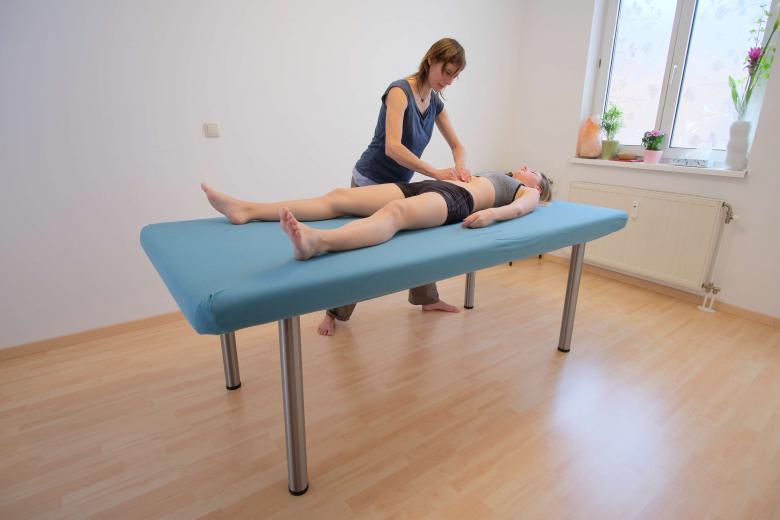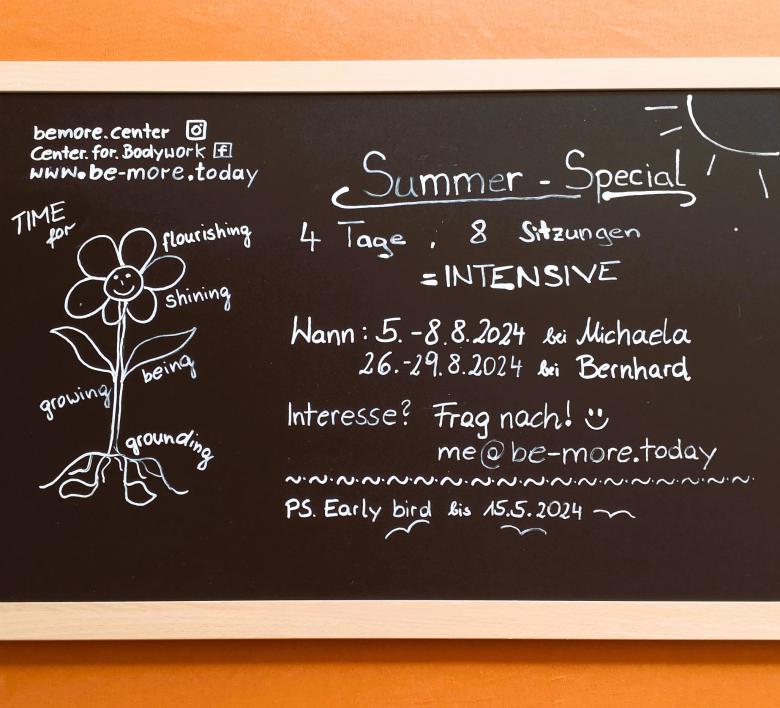
Learning Process
Learning through the body
In a personal learning process, you learn to perceive your body and recognize patterns of behavior in your everyday situations. Many of these automatic reactions can have physical consequences and you learn how to handle them. Tools for this are conscious breathing and relaxation as well as dealing with pain and fear.
The first session
A learning process consists of one-to-one sessions for one hour with the practitioner. In the first session, a foot analysis is performed in combination with a conversation. The feet are the basis for the practitioner. The result is a clear goal definition of the client and a clarity about the current personal condition.

Define your aim
A clear description of your goal is a prerequisite for the learning process. Let's say your goal is to remedy a shoulder pain. A clear description includes where, when, how often, how much you have shoulder pain. The more body awareness and attention you get through sessions, the easier it will be for you to reach your goal in everyday life. Here is an example how to define a goal and how to clarify the actual situation:
Practitioner: What can I do for you?
Client: My shoulders hurt so much. I want to do something about it.
Practitioner: Which shoulder hurts more? The right or left, or is it the same on both sides?
Client: The left.
Practitioner: Where exactly does it hurt, what kind of sensation do you experience?
Client: The pain is exactly on the top of the shoulder, it is a stinging pain and it radiates to the arm.
Practitioner: Is the pain permanent or in a specific movement?
Client: Hm, I feel the shoulder permanently tense and the pain when I'm in bed.
Practitioner: Do you feel the pain falling asleep or do you wake up in the night from the pain?
Client: Falling asleep.
Practitioner: Is the pain the same every day? Is it a difference if you worked or were on vacation that day?
etc.
The continuation of the process
At the end of the first, as well as in all further sessions, the body is used to increase perception, to get acquainted with behavioral patterns and to grasp alternatives. Further brief discussions at the beginning of each further meeting ensure a close everyday reference.
In many cases, after 10-12 sessions, clients have tools in their hands to independently manage their goals and sustainably improve their well-being.



